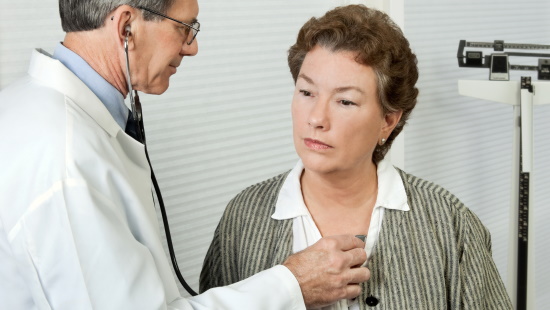Interstitial Lung Disease

Interstitial lung disease is not one disease, but rather the name of a group of similar diseases that cause scarring of the lungs, called fibrosis.
Anyone, including adults of all ages and children, can get interstitial lung disease. The pulmonary experts at the Lung Center at UM BWMC can help you improve your quality of life and manage this condition.
What Causes Interstitial Lung Disease?
In many cases, the cause is unknown, such as in idiopathic pulmonary fibrosis. But there are things that can increase your risk of getting interstitial lung disease, including:
- Genetics
- Certain medications or medical treatments, like radiation or chemotherapy
- Exposure to hazardous materials, such as asbestos
- Autoimmune disorders, such as sarcoidosis or rheumatoid arthritis
- Smoking (not only can smoking cause interstitial lung disease, it can make it worse)
What Are the Symptoms of Interstitial Lung Disease?
- Shortness of breath
- Dry cough
- Chest discomfort
- Fatigue
- Occasional weight loss
Most of the time, by the time symptoms appear, lung damage has already been done. It is important to see your doctor for diagnosis and treatment because severe cases that are left untreated can lead to life-threatening complications like high blood pressure, heart failure or respiratory failure.
How is Interstitial Lung Disease Diagnosed?
Your doctor may order one or more of the following tests:
- Chest X-ray or CT scan – to get a better look at your lungs
- Lung function test – measures your total lung capacity
- Bronchoscopy – for serious cases and to diagnose a specific type of interstitial lung disease
- Lung biopsy – for serious cases and to diagnose a specific type of interstitial lung disease
How Is Interstitial Lung Disease Treated?
Treatments vary based on the type of interstitial lung disease and how severe it is. The lung damage is often irreversible and worsens over time, so treatment generally focuses on relieving symptoms, improving quality of life and slowing down the progression of the disease.
Treatments can include:
- Medications, such as corticosteroids, to decrease inflammation in the lungs
- Oxygen therapy to deliver extra oxygen to the lungs to make breathing easier and decrease complications from low blood oxygen levels, like heart failure
- Pulmonary rehabilitation can help improve daily life by teaching patients techniques to improve lung efficiency, improve physical endurance and offer emotional support
- Extreme cases may be candidates for a lung transplant
